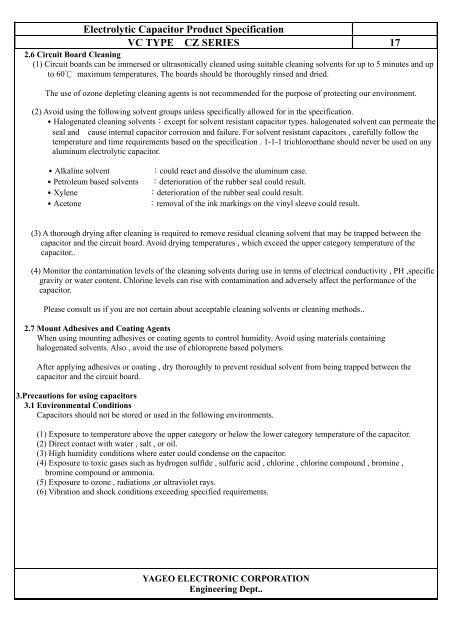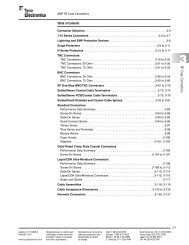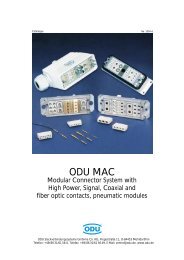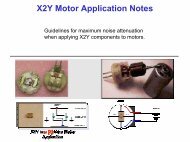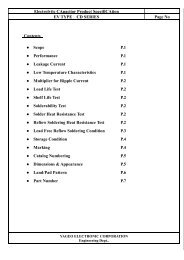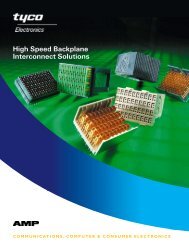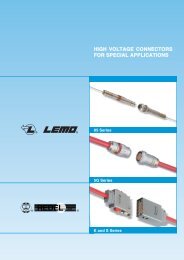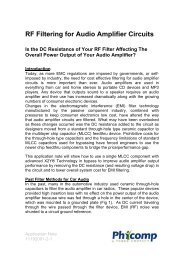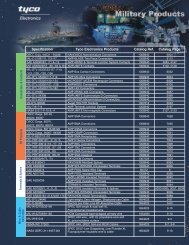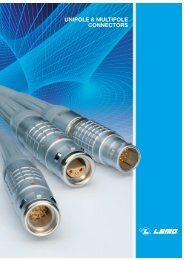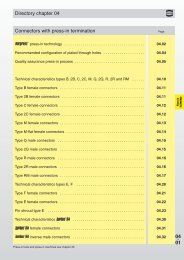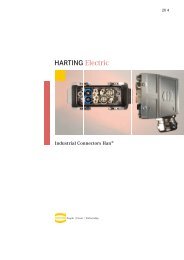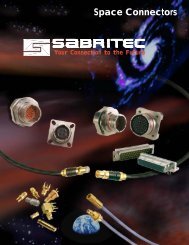Electrolytic Capacitor Product Specification VC TYPE CZ SERIES ...
Electrolytic Capacitor Product Specification VC TYPE CZ SERIES ...
Electrolytic Capacitor Product Specification VC TYPE CZ SERIES ...
Create successful ePaper yourself
Turn your PDF publications into a flip-book with our unique Google optimized e-Paper software.
<strong>Electrolytic</strong> <strong>Capacitor</strong> <strong>Product</strong> <strong>Specification</strong><br />
<strong>VC</strong> <strong>TYPE</strong> <strong>CZ</strong> <strong>SERIES</strong> 17<br />
2.6 Circuit Board Cleaning<br />
(1) Circuit boards can be immersed or ultrasonically cleaned using suitable cleaning solvents for up to 5 minutes and up<br />
to 60 maximum temperatures. The boards should be thoroughly rinsed and dried.<br />
The use of ozone depleting cleaning agents is not recommended for the purpose of protecting our environment.<br />
(2) Avoid using the following solvent groups unless specifically allowed for in the specification.<br />
․Halogenated cleaning solventsexcept for solvent resistant capacitor types. halogenated solvent can permeate the<br />
seal and cause internal capacitor corrosion and failure. For solvent resistant capacitors , carefully follow the<br />
temperature and time requirements based on the specification . 1-1-1 trichloroethane should never be used on any<br />
aluminum electrolytic capacitor.<br />
․Alkaline solvent<br />
․Petroleum based solvents<br />
․Xylene<br />
․Acetone<br />
could react and dissolve the aluminum case.<br />
deterioration of the rubber seal could result.<br />
deterioration of the rubber seal could result.<br />
removal of the ink markings on the vinyl sleeve could result.<br />
(3) A thorough drying after cleaning is required to remove residual cleaning solvent that may be trapped between the<br />
capacitor and the circuit board. Avoid drying temperatures , which exceed the upper category temperature of the<br />
capacitor..<br />
(4) Monitor the contamination levels of the cleaning solvents during use in terms of electrical conductivity , PH ,specific<br />
gravity or water content. Chlorine levels can rise with contamination and adversely affect the performance of the<br />
capacitor.<br />
Please consult us if you are not certain about acceptable cleaning solvents or cleaning methods..<br />
2.7 Mount Adhesives and Coating Agents<br />
When using mounting adhesives or coating agents to control humidity. Avoid using materials containing<br />
halogenated solvents. Also , avoid the use of chloroprene based polymers.<br />
After applying adhesives or coating , dry thoroughly to prevent residual solvent from being trapped between the<br />
capacitor and the circuit board.<br />
3.Precautions for using capacitors<br />
3.1 Environmental Conditions<br />
<strong>Capacitor</strong>s should not be stored or used in the following environments.<br />
(1) Exposure to temperature above the upper category or below the lower category temperature of the capacitor.<br />
(2) Direct contact with water , salt , or oil.<br />
(3) High humidity conditions where eater could condense on the capacitor.<br />
(4) Exposure to toxic gases such as hydrogen sulfide , sulfuric acid , chlorine , chlorine compound , bromine ,<br />
bromine compound or ammonia.<br />
(5) Exposure to ozone , radiations ,or ultraviolet rays.<br />
(6) Vibration and shock conditions exceeding specified requirements.<br />
YAGEO ELECTRONIC CORPORATION<br />
Engineering Dept..


